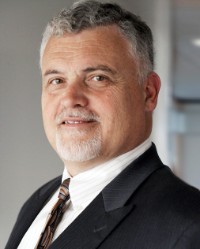Environmental Law 2025
USA – New York
Trends and Developments
Amending New York State’s Inactive Hazardous Waste Disposal Site Program
New York State’s Inactive Hazardous Waste Disposal Site Program, commonly known as the State Superfund Program, was first established in 1979 to identify, investigate and remediate sites in New York State that are impacted by the historical disposal of hazardous waste. On 9 May 2025, the Program received an additional USD1.25 billion funding and a ten-year reauthorisation as part of New York State’s fiscal year 2025-2026 executive budget. A new Section 27-1305(5) was added in Environmental Conservation Law (ECL) to require the New York State Department of Environmental Conservation (NYSDEC) to create State Superfund Site prioritisation criteria and prioritise impacted sites that are located in disadvantaged communities. Specifically, actions to address NYSDEC-designated Class 2 sites, which present a significant threat, will be prioritised on a scoring system of 100 possible points. The scoring system weighs human health threats the highest, followed by environmental threats, proximity to the state’s mapped disadvantaged communities and economic redevelopment potential.
Enforcement through abatement orders
The 2025-2026 budget enacted a new Section 27-1329 to the ECL, which created a streamlined enforcement authority for NYSDEC to initiate abatement actions upon finding that there may be imminent danger or threat to human health or the environment. The recipient party may request a meeting with NYSDEC to demand reconsideration of the order within five business days of receiving the abatement order. The recipient party is further entitled to challenge the order administratively and via special proceedings under Article 78 of New York’s Civil Practice Law and Rules. Non-compliance with NYSDEC’s abatement orders may expose the recipient to significant penalties of up to USD37,500 each day the non-compliance continues. Under ECL Section 27-1329(3), NYSDEC is prohibited from issuing abatement orders for a period of one year from 9 May 2025.
Natural resource damages
The 2025-2026 budget added a new Section 27-1327 to the ECL, which authorises the state to recover from one or more responsible parties all natural resource damages that result from the disposal of hazardous waste at a site. Each responsible party is subject to strict, joint and several liability. Natural resource damages, as defined in Section 27-1301(8), include compensatory damages for the loss of natural resources, reasonable costs incurred to assess such damages and the value of the natural resource services that were lost. Under ECL Section 27-1327(4), costs recovered from natural resource damages are to be used exclusively for the restoration, rehabilitation, replacement and acquisition of equivalent natural resources.
Bona fide prospective purchaser defence
The 2025-2026 budget enacted a broadened definition of a “responsible person” for the disposal of hazardous waste at a site. Under the revised definition at ECL Section 27-1301(11), a “responsible person” now includes any person who currently owns or operates any portion of the site except for a volunteer in the state brownfield cleanup programme (BCP). However, BCP volunteers can become responsible parties if they engage in bad faith with respect to any provision of Title 13, Article 27 of the ECL or are not in full compliance with the law.
ECL Section 27-1323(5) created a bona fide prospective purchaser liability defence. It protects purchasers who are not affiliated with a responsible party but acquired property with knowledge that the property has been impacted by hazardous waste. To assert this affirmative defence, one must establish that it has conducted all appropriate inquiries for the property’s environmental conditions before obtaining title or leasehold interest, and that any releases of hazardous substances at the property occurred prior to the party’s acquisition of the property. Moreover, the bona fide prospective purchaser must provide all legally required notices with respect to the discovery or disposal of any hazardous waste at the site, exercise appropriate care by taking reasonable steps to stop continuing discharges, prevent future discharges and prevent exposure to previously disposed hazardous waste. The bona fide prospective purchaser must also co-operate with and provide access to NYSDEC, comply with requests for information and comply with required land use restrictions and institutional controls. Determination of a party’s eligibility to the bona fide prospective purchaser defence is a fact-intensive inquiry. It is in general good practice to carefully document all diligence and compliance details and fulfil continuing obligations in transactions involving contaminated properties.
Climate Change Superfund Act
On 26 December 2024, Governor Hochul signed the Climate Change Superfund Act into law, and on 28 February 2025, the law was codified into a new Article 76 of the ECL. NYSDEC is charged with promulgating regulations to implement the statutes before 26 June 2026.
ECL Section 76-0103 establishes a Climate Change Adaptation Cost Recovery Program, seeking to recover USD75 billion from fossil fuel businesses whose covered emissions exceed one billion tons that are attributable to extraction and refining activities between 2000 and 2024. NYSDEC is charged to identify responsible parties based on strict liability standards and serve notice of cost recovery demand, no later than 30 June 2028, to seek compensatory payments that are proportionate to a party’s greenhouse gas emissions that exceed the statutory threshold.
ECL Section 76-0103(2)(g) mandates that at least 40% of the expenditure from the cost recovery programme are to be spent on Climate Change Adaptive Infrastructure Projects and at least 35% of the overall expenditure use dedicated to benefit disadvantaged communities. Climate Change Adaptive Infrastructure Projects include, among others, coastal wetlands restoration projects, upgrades to storm water drainage systems, defensive upgrades to roads, bridges, subways and transit systems, relocation and retrofitting wastewater treatment plants that are vulnerable to flooding, installation of energy-efficient cooling systems, response programmes to extreme weather events, and preventive health care programmes and medical care to treat illness and injuries caused by climate change.
Freshwater wetlands regulations
In July 2024, NYSDEC officially released its proposed regulations to implement the 2022 amendments to the Freshwater Wetlands Act, codified in ECL Article 24. The regulations arrived as two of the major 2022 amendments took effect on 1 January 2025. First, NYSDEC’s regulatory authority is no longer limited to the wetlands mapped on the Department’s freshwater wetlands maps, which have historically put landowners on notice that state-regulated wetlands are located on their property. Second, NYSDEC now has regulatory authority over wetlands of any size that meet one of 11 new criteria for “wetlands of unusual importance”. The third major amendment will see the threshold size of NYSDEC-regulated wetlands decrease from 12.4 acres to 7.4 acres and will take effect on 1 January 2028.
Extending NYSDEC’s jurisdiction to unmapped wetlands created a rebuttable presumption that any area meeting the ECL’s definition of freshwater wetland is covered by the law and subject to its permitting requirements. As a result, the state’s programme resembles the federal wetlands programme administered by the US Army Corps of Engineers; most landowners now have to obtain a wetlands delineation and request a jurisdictional determination (JD) from NYSDEC. Upon request, the Department will have 90 days to provide a JD, barring weather and ground conditions. However, in a change from an earlier draft of the regulations, if NYSDEC fails to provide a JD within 90 days plus an additional ten days following notice of its failure, then the Department must waive its jurisdiction over the parcel’s wetlands for five years.
Unlike at the federal level, where any size wetland can be regulated, wetlands generally have to be at least 12.4 acres to come under NYSDEC’s jurisdiction. However, the 2022 amendments introduced 11 new criteria by which a wetland will be regulated regardless of its size. These include wetlands:
- located in a watershed that has experienced significant flooding in the past, or is expected to experience significant flooding in the future from severe storm events related to climate change;
- located in or partially within an urban area, as defined by the United States Census Bureau;
- containing a plant species occurring in fewer than 35 sites statewide or having fewer than 5,000 individuals statewide;
- containing a habitat for an essential behaviour of an endangered or threatened species, or a species of special concern or listed as a species of greatest conservation need in New York's wildlife action plan;
- classified as a Class I wetland;
- previously classified and mapped by the Department as a wetland of unusual local importance;
- that are vernal pools known to be productive for amphibian breeding;
- located in a Federal Emergency Management Agency (FEMA)-designated floodway;
- previously mapped by NYSDEC as a wetland on or before 31 December 2024;
- with wetland functions and values that are of local or regional significance; and
- that have been determined by the NYSDEC Commissioner to be of significant importance to protecting the state’s water quality.
Of these, the urban area criteria will likely have the most significant impact. Census-defined urban areas are expansive and, particularly in Western, Central, and Upstate New York, can include areas that outwardly appear suburban or even rural. The urban area criteria could also bring under NYSDEC jurisdiction small “accidental wetlands” that materialise on undeveloped parcels due to poor stormwater management. Even more suburban wetlands will become jurisdictional under NYSDEC’s proposed criteria for watersheds that have or are expected to experience significant flooding.
Grandfathering
A key component of the proposed regulations are grandfathering provisions for projects that are already in the planning or permitting stages. If a project received a freshwater wetlands permit from NYSDEC prior to 1 January 2025, then the project can proceed under its existing JD and many of the new regulations will not apply.
Additionally, certain projects that do not require a freshwater wetlands permit under the existing regulations can delay the application of the new regulations. This includes:
- projects in which the lead agency accepts a Final Environmental Impact Statement pursuant to the State Environmental Quality Review Act (SEQRA) prior to 1 January 2025;
- Type I actions that receive a negative declaration pursuant to SEQRA prior to 1 January 2025; and
- projects that receive written site plan approval from a local government.
Depending on whether these projects are considered “major” or “minor” under existing NYSDEC regulations, the proposed wetlands regulations will not affect the project parcel for two to three years.
The Sackett effect
The freshwater wetlands regulations significantly expand the number of state-regulated wetlands just as the number of federally regulated wetlands seemingly shrank in the wake of the United States Supreme Court’s decision in Sackett v Environmental Protection Agency, 598 U.S. 651 (2023). In Sackett, the Supreme Court eliminated the broader of two tests used to determine federal jurisdiction over wetlands pursuant to the Clean Water Act. The EPA and United States Army Corps of Engineers subsequently amended the regulatory definition of “waters of the United States”. Whatever reprieve Sackett may have offered to landowners and developers at the federal level might now be offset by these new state regulations, under which vast acres of wetlands that were previously unregulated by the state will now be subject to permitting requirements.
Phillips Lytle LLP
One Canalside
125 Main Street
Buffalo
New York 14203
USA
+1 716 847 8400
+1 716 852 8100
info@phillipslytle.com www.phillipslytle.com


